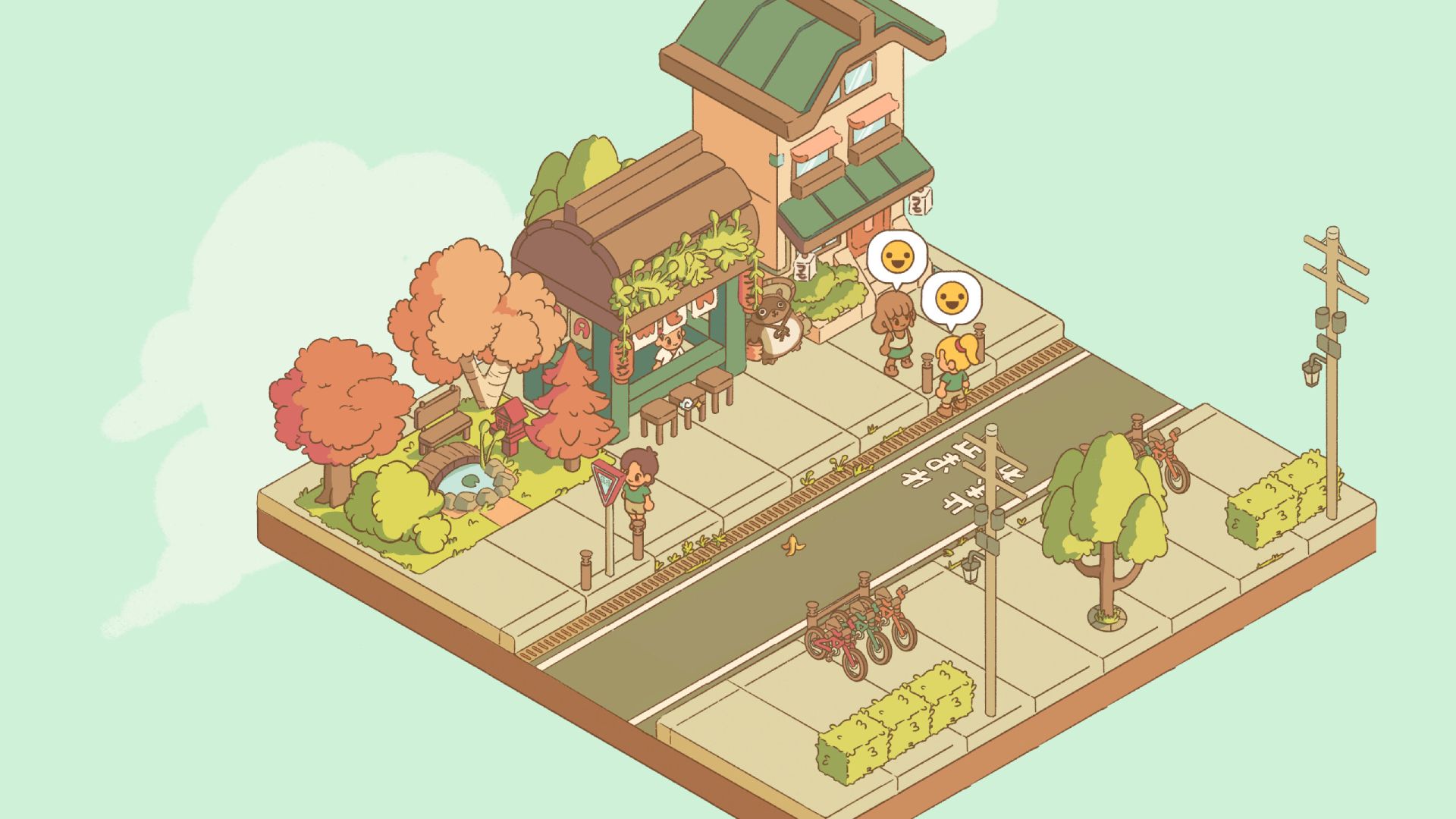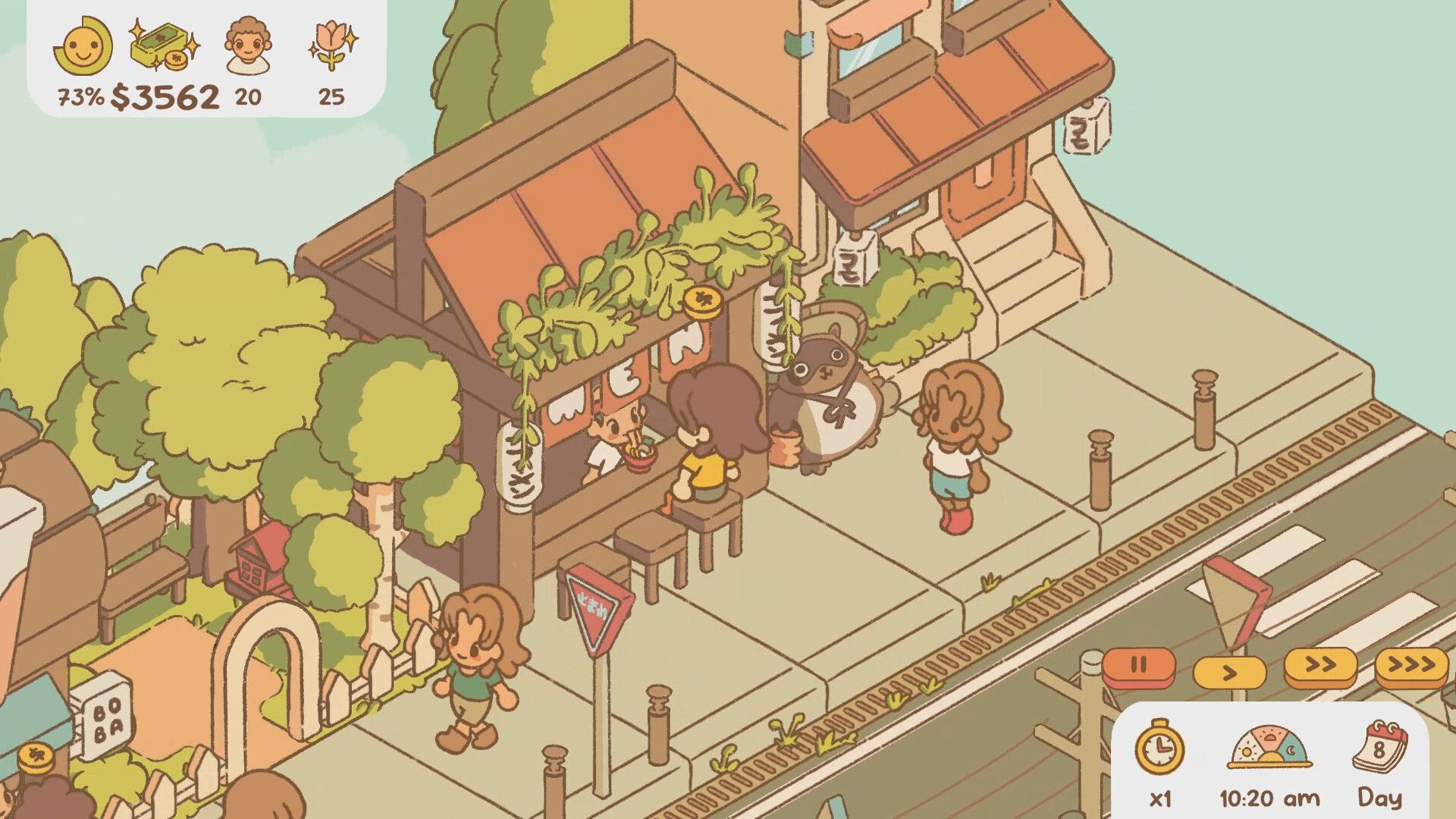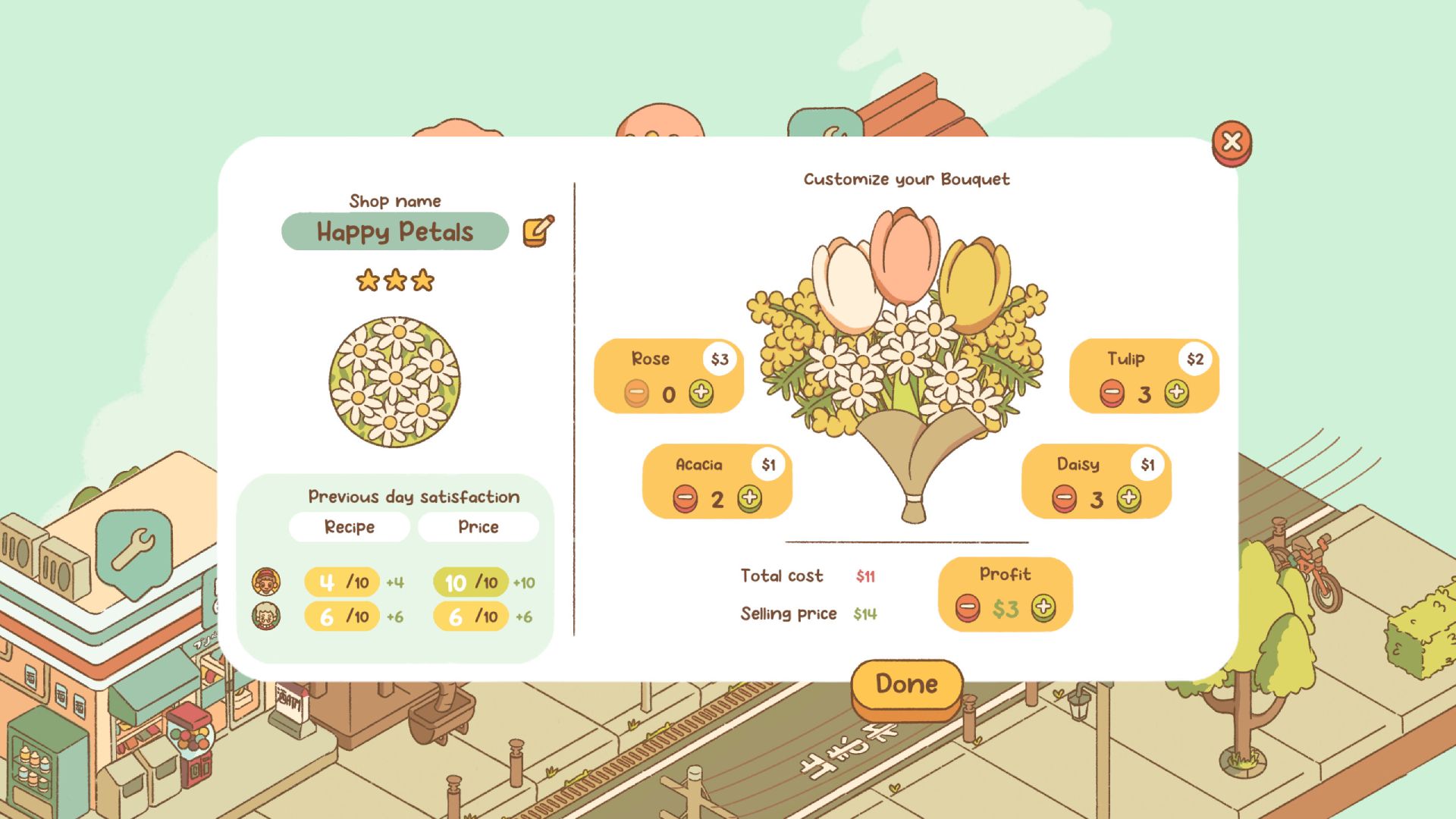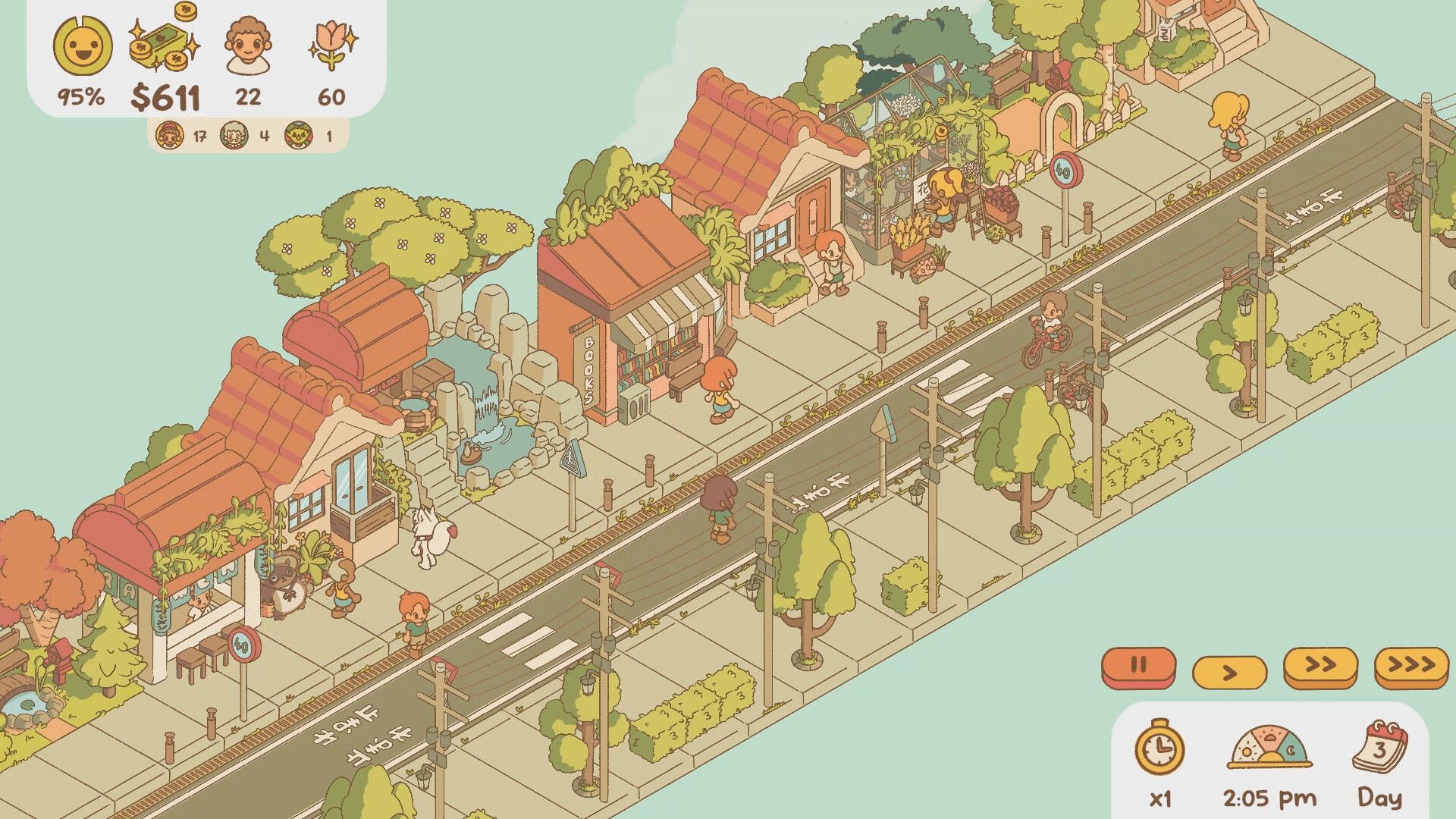It is rare that I find a game I am so immediately drawn to, one that simultaneously offers me jaw-dropping visuals and engrossing gameplay that will keep me entertained and captivated for hours on end. Rarer still is a game that manages to toe the line between cozy and complex so audaciously and yet so successfully. Naturally, as one might suspect, Minami Lane, the incredibly entertaining management sim from developer Doot, is one such game, and I cannot overstate just how much I love it.

“There is a wealth of complexity to Minami Lane’s visuals, a striking amount of detail put into almost every aspect of these streets.”
Minami Lane will almost certainly initially appeal to players thanks to its gorgeous, cozy pastel aesthetic. Its warm, inviting colors, coupled with its chibi-esque art style, make for a truly delightful experience, one that compliments its innovative breakdown of the management sim genre. Minami Lane manages to stand out from other games in the cozy scene thanks, in large part, to its unique sense of identity, one that permeates throughout the entire cheerful experience.
There is a wealth of complexity to Minami Lane’s visuals, a striking amount of detail put into almost every aspect of these streets. From the intricacies of each storefront to the lively jaunts of the NPCs, the worlds of Minami Lane feel very much alive. Everything feels wonderfully animated, which, in turn, makes each street all the more dynamic.

However, there’s a pleasing simplicity to it, one that ensures the UI elements never feel overbearing and that the player has a consistent and clear understanding of what is unfolding before them. Rarely does Minami Lane feel cluttered, a remarkable achievement considering the entire game takes place on ever-bustling streets.
“The balancing act inherently baked into Minami Lane’s core gameplay loop sees you trying to appease all demographics by tweaking aspects of your street.”
Of course, there’s more to Minami Lane than its sumptuous visuals. This is a management sim in which players must take care of a street and its varied inhabitants. You’ll have to manage the wants and likes of your different demographics, as well as improve its overall aesthetic qualities. Despite its apparent simplicity, Minami Lane offers a plethora of interesting scenarios to deal with, ones that require genuine thought and strategy.
Many of the varied buildings you can construct can be greatly customized, even down to what specific items they sell. For example, you can add more eggs to a noodle stand’s recipe to entice an older audience, or a bookstore can stock more manga to get a younger crowd. You can, in theory, construct as many buildings as you’d like, so long as you have the money, encouraging you to tweak several stores so that each one targets a specific demographic of your street.

However, more often than not, you’re challenged to hit certain goals using only a handful of buildings. Therein lies the balancing act inherently baked into Minami Lane’s core gameplay loop, which sees you trying to appease all demographics by endlessly tweaking recipes and stocked items. You’ll also need to beautify the street as much as you can, something that can be done through upgrading buildings or constructing more parks. You’ll have to weigh up whether or not to spend a building slot on a park or lose out on extra income through upgrades in order to improve your street’s overall aesthetic rating.
“Removing trash, petting cats, or finding the hidden tanuki offer fun distractions from the management side of things.”
Fortunately, Minami Lane is an incredibly innovative game, one designed to offer a creatively cozy experience that never feels overly complicated. While it is a wonderfully complex game, mechanically, it isn’t particularly demanding, affording the player moments to breathe and take in everything unfolding at a reasonable pace. You’ll never get overwhelmed by the influx of new mechanics, nor will you feel punished for any mistakes, as Minami Lane perfectly balances its nuanced gameplay with the welcoming feeling that what you’re doing is meant to be, at all times, enjoyable.
There are also plenty of ways to keep track of all of your inhabitants’ wants and needs. Their thoughts about certain storefronts can be saved so that when the day ends, you can read through them and tweak anything accordingly. You also have a handful of interactables, such as removing trash, petting cats, or finding the hidden tanuki, which offers fun distractions from the management side of things should you find yourself getting overwhelmed.

“If you’re looking for an approachable, gorgeous, engaging, and engrossing indie game, then I highly recommend Minami Lane.”
Minami Lane is a startlingly good management sim, one that perfectly balances its complex gameplay with its overall cozy tone, ensuring that players are neither bored nor overwhelmed. It is an astounding achievement and one that never wore off over the several hours that I played for.
While I was limited in what modes and missions I could access, I suspect Minami Lane will remain captivating for a considerable amount of time. If you’re looking for an approachable, gorgeous, engaging, and engrossing indie game that even those unfamiliar with the genre will be able to enjoy, then I highly recommend Minami Lane.
Minami Lane will be released on PC on February 28, 2024. Make sure to check out its Steam store page and wishlist it so you’re notified of any future updates.
Indie Spotlights are previews of indie games that have caught our eye. They’re more like a review-in-progress that allows us to cover more indie games than we might normally have time for.










